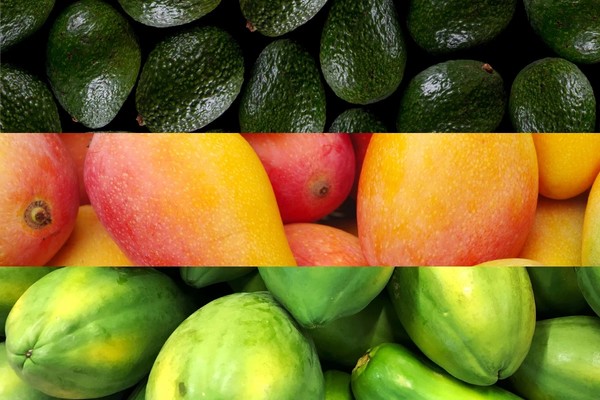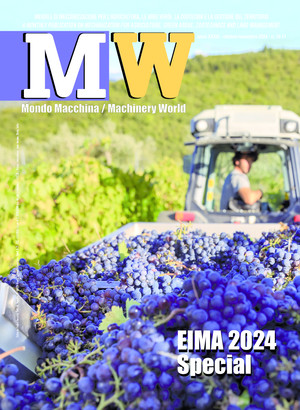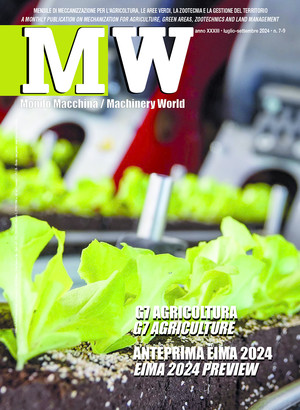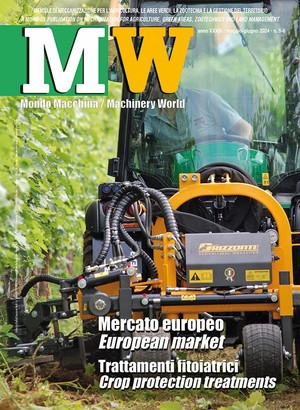
Avocado, papaya, and mango: the new fruits of Southern Italy
Southern Italy is meeting the growing domestic market demand by gradually investing in exotic fruit production, which is being facilitated by softening temperatures. The main mechanized solutions for fruit harvesting
In modern diets, exotic fruits are becoming increasingly important for two reasons: a growing dietary trend and for purely health purposes, such as “fit” diets, which include mixed fruit salads. Avocado, mango, and papaya, or three of the best-known fruits in this large family, grow best in the typical climates of tropical and equatorial regions; in fact, among the world's major producing countries are Mexico for avocado and India for papaya and mango. Favorable soil conditions (and climate change...) have also made it possible to grow these exotic fruits in some Italian regions, such as Sicily and Puglia. The production of exotic fruits began quietly in Sicily in the 1970s and has seen a significant increase in recent decades. This success has fostered increased production and spread to the national market. Major Italian producers include Catania-based "Sicilia Avocado," and other avocado producers in the Salento area.
Avocado was one of the first exotic fruits cultivated in Italy, with planting attempts made in the 1950s. The Mediterranean climate, which has seen increasingly higher temperatures in recent years, has made this crop a perfect choice for expansion. Its high-income potential is further enhanced by its excellent commercial yield.
The avocado is an evergreen tree plant with an average height of between 10 and 15 m, belonging to the Lauraceae family. In order to ensure good rooting, careful attention must be paid to soil characteristics: the soil must be fertile, with a limited presence of skeleton and good water retention capacity. Irrigation is crucial, especially when using brackish or very calcareous water. It is important to consider the effects of sun exposure and wind, as well as the range and relative humidity. The avocado is a subtropical species that prefers mild, humid climates and is strongly inhibited by temperature changes. The optimal temperature for avocados is between 20 and 25 degrees Celsius, with a small range between day and night. The plant is resilient to cold damage, but it is particularly susceptible during the flowering period. Severe cold can cause drastic drops in production, up to 50 percent. After planting, avocados enter production rather quickly, peaking 3-4 years after planting, with a yield of about 15-20 t/ha.
To encourage adequate canopy development, the planting sixth must vary between 5 and 8 m between rows and on the row. It is also appropriate to intervene with pruning if the canopies overlap, penalizing photosynthesis. It is standard practice in many Italian avocado crops to keep the inter-row grassed to limit evapotranspiration.
Harvesting is undoubtedly one of the most labor-intensive operations in the crop cycle, as it is carried out only manually. The pendulous fruits, carried on the branches at the apical level, are cut and placed in special boxes for later delivery. In line with the width of the row spacing and plant bearing, fruit-picking wagons or tractors with trailers are used to transfer the bins with the product. Specifically, fruit-picking wagons, which are variable-geometry elevating platforms (thus often with extendable elements and safety balustrades), allow workers to reach even the highest parts of the plants easily.
Papaya. It is also cultivated in the Mediterranean basin, mainly in Spain and Italy (particularly Sicily). This arboreal plant has a non-woody stem and grows to a height of between 5 and 10 m. The fruits develop in clusters immediately below the insertion of the petioles of the palmate leaves. During growth, the fruit invades the space occupied by the leaf, eventually leading to its abscission. The weight of the fruit varies between 0.5 (in the case of dwarf plants) to over 9 kg. Given its tropical origin, papaya also requires special attention to soil and climate conditions for optimal cultivation. Although it needs good irrigation for fruit growth, papaya is a species particularly susceptible to waterlogging. Production can reach as much as 50 t/ha, provided the soil is loose, well-ventilated, and excellently drained. It is more susceptible to cold than the avocado, so in southern Italy, it is advisable to raise the plants in sheltered stands. Temperatures below 5-6°C can cause crop damage. The thermal optimum is around 20-22°C.
To ensure the best development of the fruit and its regular ripening, the crop must receive full sun. Optimal production is achieved two to three years after planting and remains constant until about six years, after which the plants are often explanted for renewal.
Papaya harvesting is scalar, between June and November in southern Italy, and is labor-intensive as it is done manually, using ladders and/or aerial platforms. Laying the fruit in boxes is a delicate operation. Injuries at this stage can encourage fermentation and mold growth, which depreciate the product or even compromise its marketing. Due to the brief time between harvest and sale, in Sicily, the cultivation of papaya for domestic consumption allows the fruit to be harvested when fully ripe rather than at the beginning of veraison, as is the case outside Europe. This detail makes the fruit particularly desirable because it is "ready to eat," but it also makes it more susceptible to attack by pathogens. For produce destined for wide-ranging shipments, it is essential to wash it carefully and apply anti-mold products topically.
Mango. Mango is a widespread tropical fruit grown mainly on the Indian continent, like avocado and papaya. It is an evergreen tree plant belonging to the Anacardiaceae family. It can reach 30 m in height under favorable conditions. In the Mediterranean basin, it is cultivated in Spain, Israel, Morocco, and, more recently, Sicily. As it is an allochthonous plant, it needs particular care when planting. The ideal soil for this plant is well-drained and without too much skeleton, as it too fears water stagnation. Again, adequate irrigation is important to ensure high production. Planting spacing varies according to the type of crop: In subtropical environments, extensive crops have row and inter-row spacings of 7-8 m, while in super-intensive farms, the measurements are reduced to as little as 2.5 m.
In Italy, the ripening period is scalar, from July to November. Production varies depending on the cultivar. Harvesting is done manually, with the occasional use of scissors and manual shears to cut the fruits, which are placed in special bins for delivery to the farm center. Depending on their final destination, the fruits may simply be washed and dried (to prevent the development of mold and fruit rot) or superficially treated with waxes to improve their appearance. If a long storage period is planned, the product is sprayed with fungicide and anti-mold principles.
Facilitating means for harvesting and fruit delivery
Most of the tropical crops produced in Italy do not currently allow mechanized harvesting because of the plants' bearing, the position of the fruit on the plant, and the planting method adopted. However, tools are available to facilitate harvesting and delivery.
Pruning shears can also work excellently for detaching fruit from branches. For those placed in an unreachable position, rods are used. At the end, they are equipped with mesh, pouch-like containers that detach the fruit by a small rotation.
Crates (bins) are used for temporary storage in the field. They are then transferred onto the flatbed or into the body of trailers pulled by narrow-track tractors that can move nimbly through the crop inter-row.
The robotic harvesting of mangoes
Dedicated machines are not currently available on the market for harvesting exotic fruits, although some ongoing studies are evolving in that direction. At CQ University, a machine is being developed that, through a series of optical and infrared sensors, recognizes the mango fruit and identifies the correct time for harvesting, depending on the degree of ripeness, and then performs the detachment with a robotic arm. The machine, currently still at the prototype level, is based on a pruning frame, on top of which are housed telescopic mechanical arms that pick the fruits, which are then deposited in some hoppers installed on board. Each arm gently grasps the fruit and rotates it through more than 90 degrees until the petiole is severed. This method significantly reduces the use of labor, relieving the operators of a repetitive and sometimes rather insidious task since the sap of the mango plant is very acidic and can cause annoying allergies.








